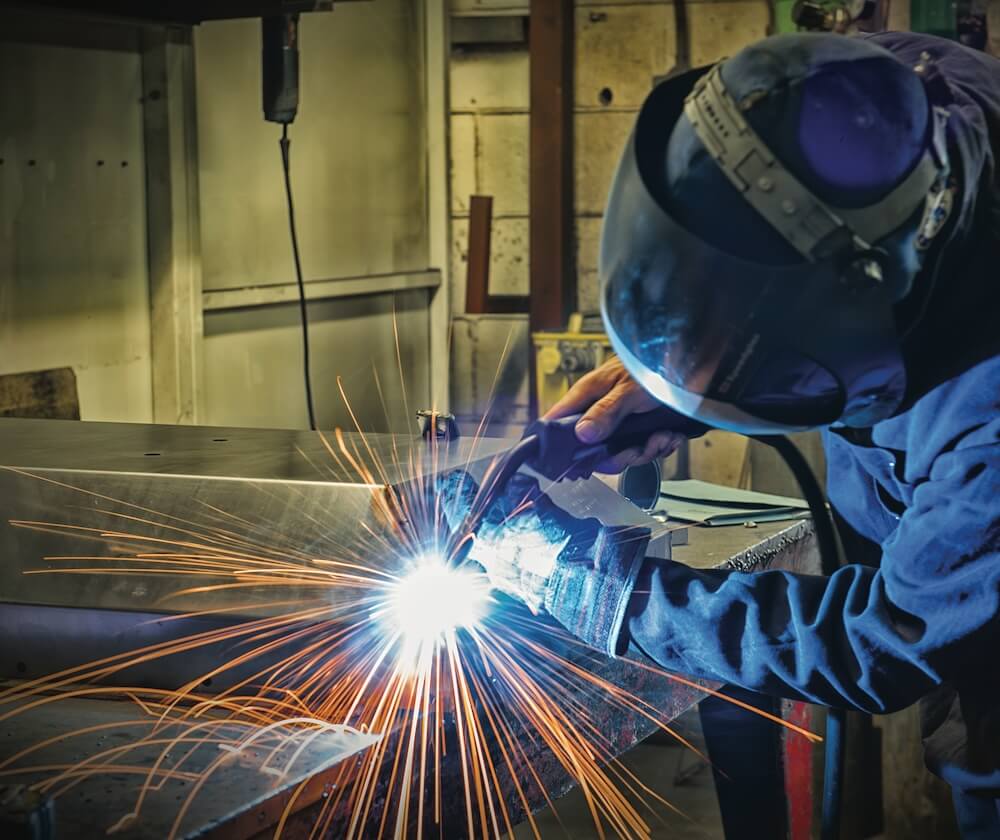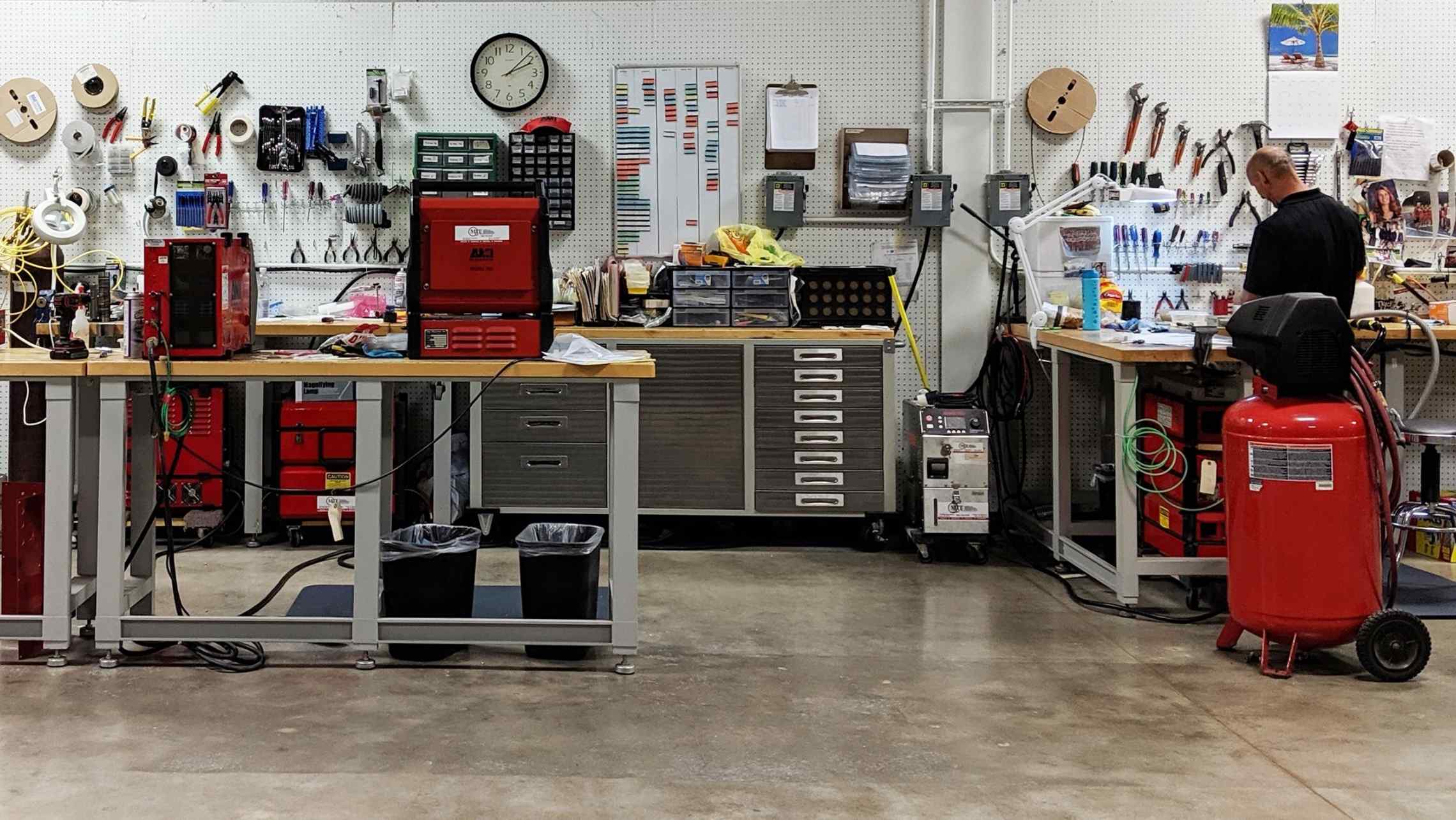What causes cracking in welds and how Montana Mobile Welding and Repair avoids them
Everything about Welding: Key Insights Into Techniques and Best Practices for Success
Welding includes a range of methods, each fit for details products and applications. Understanding these techniques, such as GMAW, SMAW, and TIG, is important for attaining ideal outcomes. The ideal equipment and safety and security techniques can not be forgotten. As prep work and fixing play vital roles in the welding procedure, mastering these elements can greatly boost the high quality of the end product. What are the crucial aspects that assure an effective weld?
Understanding Different Welding Techniques
Welding methods include a selection of approaches, each fit to particular applications and materials. Amongst the most usual methods are Gas Steel Arc Welding (GMAW), Secured Metal Arc Welding (SMAW), and Tungsten Inert Gas Welding (TIG) GMAW, also called MIG welding, is popular for its speed and flexibility, making it perfect for slim materials. SMAW, or stick welding, is preferred for its simpleness and performance in outside atmospheres, specifically with thicker steels. TIG welding offers accuracy and control, making it appropriate for intricate work and non-ferrous metals (Montana Mobile Welding and Repair Welding). Each method has its distinct benefits and factors to consider, allowing welders to pick the very best approach based on the task's needs, material kind, and wanted results. Recognizing these methods is vital for successful welding
Important Welding Equipment and Tools
While different welding methods need certain abilities, the ideal equipment and tools are equally important for achieving top quality results. Crucial welding tools consists of welding devices, which vary relying on the method-- such as MIG, TIG, or stick welding. Protective gear, including gloves, aprons, and safety helmets, guarantees safety and security and convenience throughout the process. Additionally, fixtures and clamps assist secure products in place, making sure precision in welds. Consumables like welding poles, wire, and shielding gas are additionally essential components that affect the top quality of the weld. In addition, tools such as mills and cutters help with surface preparation and post-weld completing, adding to a specialist result. Purchasing high-quality devices eventually enhances the performance and effectiveness of welding projects.
Security Practices in Welding
Appropriate safety techniques are important in the welding industry to secure employees from possible hazards. Welders should put on suitable individual protective equipment (PPE), including helmets with proper shading, handwear covers, and flame-resistant clothes. Appropriate air flow is essential to reduce exposure to harmful fumes and gases generated throughout the welding procedure. Additionally, workers need to be trained in the appropriate handling of welding devices to stop accidents. Fire security actions, such as keeping flammable products far from the welding area and having fire extinguishers conveniently offered, are needed. Routine examinations of tools and work spaces can aid identify possible threats before they lead to crashes. By sticking to these safety practices, welders can produce a safer working environment and decrease threats related to their profession.
Readying Materials for Welding
Preparing materials for welding is a crucial step that substantially affects the quality and stability of the last product (Montana Mobile Welding and Repair Belgrade). Correct preparation entails cleaning up the surfaces to remove pollutants such as oil, rust, and dirt, which can endanger the weld. Methods such as grinding, fining sand, or using solvents are generally utilized to accomplish a tidy surface. In addition, guaranteeing that the materials mesh well is vital; voids can stick welder for sale bring about weak welds. It's likewise crucial to think about the positioning and positioning of the parts, as this will certainly affect the convenience of welding and the final end article result. Finally, choosing the proper filler material and making sure compatibility with the base metals is important for achieving solid, resilient welds
Tips for Getting High-Quality Welds
Attaining high-grade welds requires interest to detail and adherence to best techniques throughout the welding procedure. Correct joint preparation is necessary, ensuring surfaces are clean and complimentary from pollutants. Choosing the suitable filler material and welding technique based on the base steels is essential for suitable bonding. Preserving constant traveling speed and angle while welding can advertise and avoid issues uniformity. Additionally, controlling warm input is necessary; too much warmth can lead to bending and deteriorated joints. On a regular basis evaluating the welds during the process permits immediate modifications if necessary. Employing ideal post-weld therapies, such as cleaning and stress alleviation, can boost the sturdiness and integrity of the weld, ultimately making sure a successful end result.
Troubleshooting Usual Welding Issues
Welding commonly provides obstacles that can impact the high quality and integrity of the last item. Usual issues such as porosity, irregular weld grains, and overheating can occur, each needing specific troubleshooting techniques. Understanding these troubles is necessary for welders to improve their skills and attain excellent results.
Porosity Problems Clarified
Although porosity can often be forgotten, it remains an important issue in welding that can jeopardize the stability of an ended up item. Porosity describes the existence of small gas pockets within the weld grain, which can compromise the joint and lead to premature failure. This issue typically arises from contaminants, dampness, or improper protecting gas insurance coverage throughout the welding process. To mitigate porosity, welders need to validate that the base materials are mig welder dry and tidy, make use of ideal shielding gases, and maintain consistent welding specifications. On a regular basis inspecting the equipment and setting can also assist determine potential issues prior to they show up in the weld. Resolving porosity successfully is essential for achieving strong, durable welds that satisfy top quality requirements.

Irregular Weld Beads
Inconsistent weld beads can greatly influence the top quality and strength of an ended up product. Various variables contribute to this concern, including improper traveling speed, wrong amperage settings, and irregular electrode angles. When the welder relocates too rapidly, a bead may appear slim and lack infiltration, while moving too slowly can cause too much accumulation. Additionally, utilizing the incorrect amperage can lead to either undercutting or too much spatter, both of which compromise weld honesty. The welder's method, such as irregular lantern motion, can likewise bring about uneven bead look. To reduce these problems, welders need to concentrate on maintaining constant, controlled motions and guaranteeing appropriate equipment settings to achieve harmony in their welds. Consistency is vital to accomplishing strong and trustworthy welds.
Getting Too Hot and Warping Issues
Too much warmth during the welding procedure can result in significant getting too hot and deforming issues, influencing the structural stability of the workpiece. These issues typically show up as distortion, which can jeopardize placement and fit-up, making additional setting up testing. Factors contributing to overheating include the option of welding specifications, such as voltage and take a trip speed, as well as the sort of product being welded. To alleviate these issues, welders ought to preserve constant travel speed and suitable warm input while monitoring the work surface temperature. In addition, preheating or post-weld heat treatment can aid relieve stresses triggered by rapid air conditioning - Montana Mobile Welding and Repair Belgrade Welding. Routine evaluation and adherence to best methods are essential in protecting against overheating and guaranteeing the long life and reliability of welded frameworks
Regularly Asked Inquiries
What Are the Occupation Opportunities in the Welding Market?
The welding industry uses diverse career possibilities, including positions as welders, assessors, designers, and teachers. Professionals can function in manufacturing, construction, aerospace, and vehicle markets, taking advantage of strong need and affordable salaries in various duties.
How Can I Boost My Welding Rate Without Sacrificing Top Quality?
To improve welding rate without compromising high quality, one must practice efficient methods, maintain devices, maximize setups, and boost hand-eye coordination. Routine training and seeking comments can additionally significantly add to achieving faster, top quality welds.
What Certifications Are Available for Welders?
Countless qualifications exist for welders, consisting of those from the American Welding Culture (AWS), the National Facility for Construction Education and Study (NCCER), and different industry-specific companies. These credentials enhance employability and show skill proficiency.
How Does Welding Affect the Characteristics of Metals?
Welding affects the residential or commercial properties of steels by altering their microstructure, which can bring about adjustments in hardness, strength, and ductility. Warmth input and cooling prices throughout the process greatly affect these material qualities.
Can I Weld Dissimilar Metals With Each Other?
